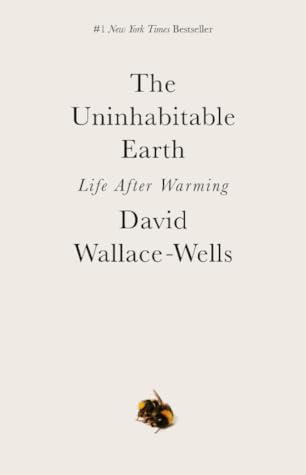More on this book
Community
Kindle Notes & Highlights
Unless you are a teenager, you probably read in your high school textbooks that these extinctions were the result of asteroids. In fact, all but the one that killed the dinosaurs involved climate change produced by greenhouse gas. The most notorious was 250 million years ago; it began when carbon dioxide warmed the planet by five degrees Celsius, accelerated when that warming triggered the release of methane, another greenhouse gas, and ended with all but a sliver of life on Earth dead.
Many perceive global warming as a sort of moral and economic debt, accumulated since the beginning of the Industrial Revolution and now come due after several centuries. In fact, more than half of the carbon exhaled into the atmosphere by the burning of fossil fuels has been emitted in just the past three decades. Which means we have done as much damage to the fate of the planet and its ability to sustain human life and civilization since Al Gore published his first book on climate than in all the centuries—all the millennia—that came before.
The majority of the burning has come since the premiere of Seinfeld. Since the end of World War II, the figure is about 85 percent.
The United Nations’ Intergovernmental Panel on Climate Change (IPCC) offers the gold-standard assessments of the state of the planet and the likely trajectory for climate change—gold-standard, in part, because it is conservative, integrating only new research that passes the threshold of inarguability. A new report is expected in 2022, but the most recent one says that if we take action on emissions soon, instituting immediately all of the commitments made in the Paris accords but nowhere yet actually implemented, we are likely to get about 3.2 degrees of warming, or about three times as much
...more
This is part of what makes climate change what the theorist Timothy Morton calls a “hyperobject”—a conceptual fact so large and complex that, like the internet, it can never be properly comprehended. There are many features of climate change—its size, its scope, its brutality—that, alone, satisfy this definition; together they might elevate it into a higher and more incomprehensible conceptual category yet. But time is perhaps the most mind-bending feature, the worst outcomes arriving so long from now that we reflexively discount their reality.
One estimate suggests that, to have hopes of two degrees, we need to open new full-scale carbon capture plants at the pace of one and a half per day every day for the next seventy years. In 2018, the world had eighteen of them, total.
Since 1950, much of the good stuff in the plants we grow—protein, calcium, iron, vitamin C, to name just four—has declined by as much as one-third, a landmark 2004 study showed. Everything is becoming more like junk food.
Every year, the average American emits enough carbon to melt 10,000 tons of ice in the Antarctic ice sheets—enough to add 10,000 cubic meters of water to the ocean. Every minute, each of us adds five gallons.
The last time the earth was four degrees warmer, as Peter Brannen has written, there was no ice at either pole and sea level was 260 feet higher. There were palm trees in the Arctic. Better not to think what that means for life at the equator.


